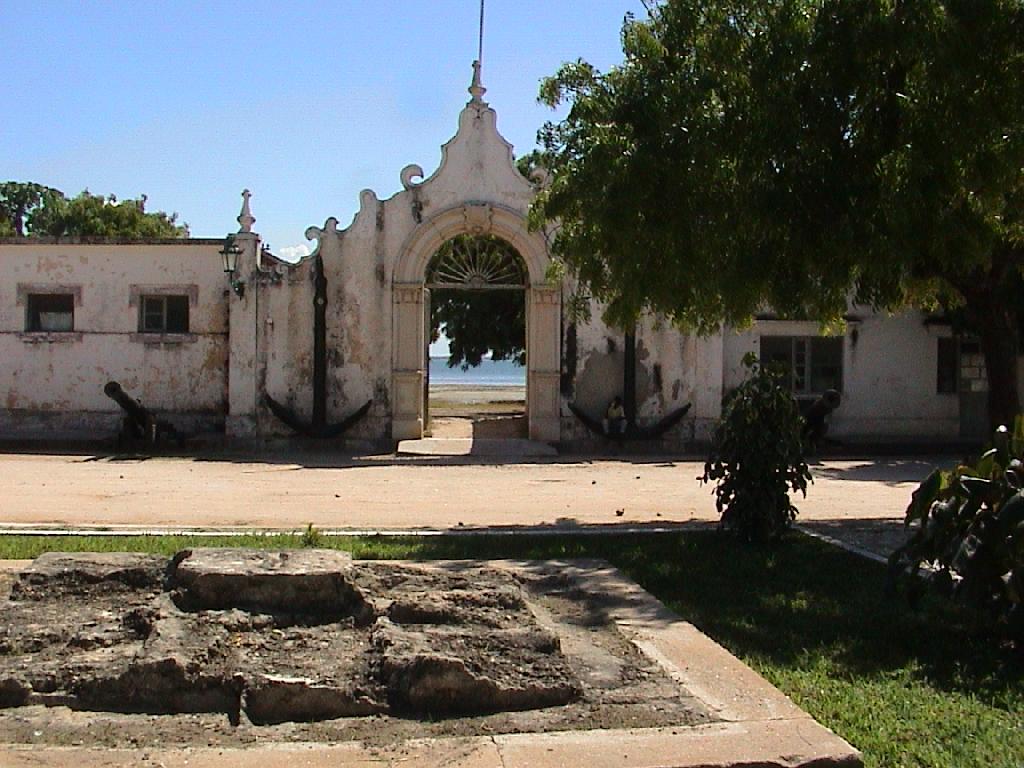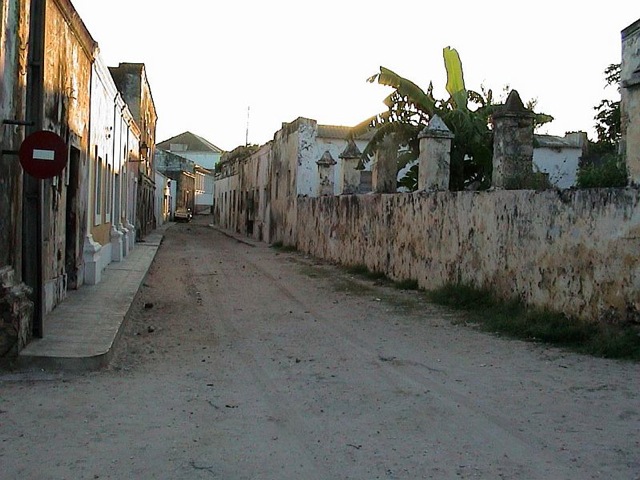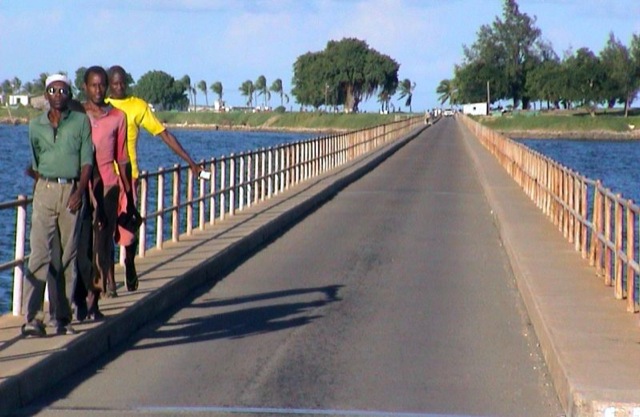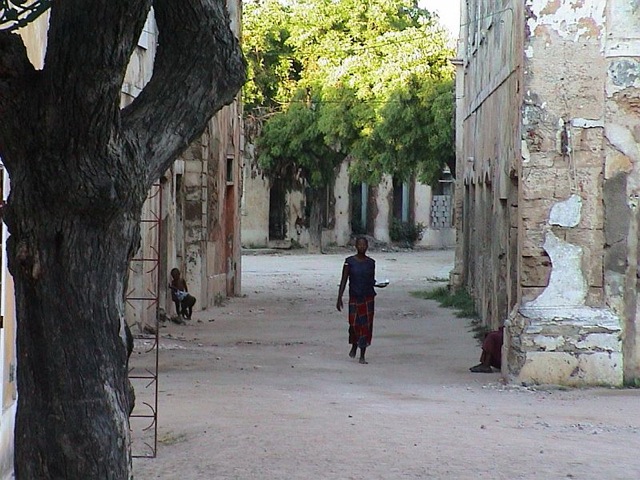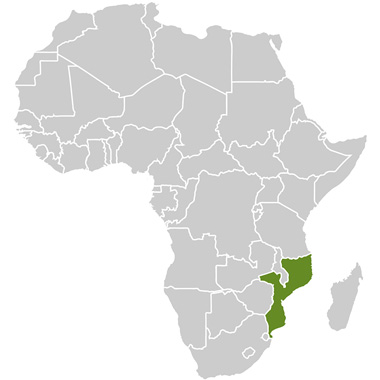Mozambique Island (Ilha de Mozambique) is an island 2.5km long and 4km wide, situated off the northern Mozambique coast, approximately 200km from the closest mainland city, Nampula. One of the first places where Portuguese explorers landed in the 15th century, it is rich in history. It is from this island that Mozambique took its name after the colonial government set up its headquarters there in the 16th century.
After the first visit and workshop held early in 2001 by the Open Africa team with staff from the Ministry of Tourism in Maputo, the people of the island were inspired to do something to enhance tourism for their island and community. This has led to the establishment of two educational organisations, called Cultural Club Nakunco and Youth Group Olakana wa Miizavo, which aim to educate the island community through dancing, singing, acting and many more activities that will make everyone aware of their valuable resources.
Useful information:
Visa requirements:
All visitors to Mozambique must have a valid passport and visa. Visas are obtainable from Mozambican embassies and consulates. The Mozambican authorities have now made it easier to get a visa at the border without waiting for days. A passport and two ID photos are required for a visa to be issued.
Airlines:
The island is accessible by air and by road. There is an international airport at Nampula and a small airport just off the island, about 7km away. Various well-known airlines operate to and from Mozambique, including LAM (Linhas Aereas de Mozamique), SAA (South African Airways), Air Mauritius and Air Zimbabwe (represented by LAM in Maputo). Please contact your travel agency for further details.
Road access:
The road to the island used to be strictly a 4×4 route – for the adventurous driver. However, the road condition has improved significantly and a wide tarmac road now runs from the city of Nampula to the coastal town of Nacala, which links to the Ilha de Mozambique.
The island itself is charming and beautiful, but rustic. It is in fact the antithesis of modernity, wherein lies its charm. The island is linked to the mainland by an amazing 4km bridge. Because the bridge is only wide enough for one car, it has been designed with a few embayments to allow cars travelling in opposite directions to pass each other with the least delay. But there are few cars and seldom any delays.
The 200km stretch to Namacurra has improved and the portion between Nampula and Namacurra is difficult but under repairs. Much has been done to improved the contact between the island and the lighthouse (Ilha de Goa).
Currency and banking:
The currency of Mozambique is called the metical. The US dollar and South African rand are widely accepted. It is advisable to carry cash or travellers’ cheques, because credit cards are not widely accepted.
There is only one bank on the island, called BCM (Banco Comercial de Mozambique). In Nampula there are more banks: BIM (Banco de Internacional de Mozambique) and BSTM (Banco Standard Totta of Mozambique). The latter can handle money transfers from abroad quickly and reliably.
Language:
The main languages spoken on the island are Portuguese and Macua. English is taught to young people at school to make them better tour guides around the island.
Telephones:
Most major towns in Mozambique are served by a satellite telephone system, so a cellphone can also be used in most parts of the country. The island has a mobile phone connection which works with at least some of the foreign cards, and the international roaming facility functions in Mozambique.
Internet:
There is no Internet café or local service provider on the island yet, but the Somoz office can help in getting you connected to the Internet, at least on normal weekdays. However, prices are quite high as the calls are inter-urban.
Accommodation:
The island offers a range of accommodation, from the four-star hotel, Omuhipiti, to a few bed and breakfasts. Eating places include a number of good restaurants. Fresh fish is a regular feature on the menu, as there are many species of fish caught locally and fishing is the main occupation of the islanders.
Water:
The water on the island comes from good boreholes, but it should be boiled or filtered, or both, before drinking. Bottled mineral water is readily available in shops and restaurants.
Malaria:
Mozambique is a malaria zone, so it is advisable to take anti-malaria medication or precautions prior to your visit. Visitors are advised to avoid getting bitten by using plenty of repellants.
Safety:
The island is very safe for visitors. With the population numbering about 13 000, criminal activities are virtually non-existent. However, this does not mean people should be careless with their belongings.
Things to do, see and experience:
The Ilha de Moçambique is a fascinating destination for visitors interested in history and culture. The old part of the island, about two-thirds of its total area, was declared a World Heritage Site by Unesco in 1992. There are buildings constructed out of coral, although many are in poor condition owing to lack of maintenance in recent years. Wandering among them and the old grand piazzas is like walking into another world, at once both eerie and awe-inspiring. Places of interest include St Paul’s Palace, the Museum of Sacred Art, the Fortress of St Sebastian and many more. On the mainland, there is a cemetery for British soldiers who fought in World War II. A guided tour can be arranged.
Other activities available on the island include snorkelling, fishing, diving, dhow rides and swimming (although the beaches are not suitable for swimming until they have been cleaned up). Visits to two small, uninhabited islands nearby can also be arranged. On this route, there are also several facilities offering ‘musiro‘, a unique beauty therapy treatment made in the traditional manner from natural ingredients found on the island.
Musiro:
Musiro is a beauty treatment product that is made of a root of a local tree. It is completely natural, containing no artificial additives. The root is ground into powder and then mixed with water to form a cream that soothes and softens the skin. The treatment is usually applied to the face, but it can be used all over the body. Whole-body treatments used to (and sometimes still do) form part of the traditional wedding preparations of a girl in the coastal zone, Ilha and surrounds. The facial mask of musiro, which can be worn during the day or at night, has become characteristic of the north in Mozambique.
Places of interest:
- Palace and Chapel of São Paulo: A primary tourism attraction, St Paul’s was built to house the former governor’s residence, and provide him with access to receive mass. The building dates back to the 1700s and is now a museum. Behind the palace is the Museum of Sacred Art, which contains religious ornaments, paintings and carvings;
- Fort of São Sebastião at the northern end of the island: Built by the Portuguese, circa 1558-1620, this fort was situated around a spring, the only reliable source of drinking water on the island. The construction of the fort was ordered because of the danger of revolt by the Turks on the island. There was then just one fortification with artillery to defend the entrance to the port, alongside the chapel of Our Lady of the Bulwark, built in 1521-1522, and which is the only example of Manueline architecture in Mozambique;
- Chapel of Nossa Senhora de Baluarte, on the northern tip of the island, is reported to be the oldest standing building in the Southern Hemisphere, dating back to 1522;
- There is a Hindu temple near the municipal market and an ancient Hindu, Muslim and Christian cemetery can be visited at the southern end of the island; and
- Also at the southern end of the island is the Church of Santo Antonio, located on a headland with fishing boats moored nearby.
History of the Island:
Mozambique island has a rich and colourful history, from providing a stopover point for merchants plying the gold route of East Africa to being used as a base by Portuguese fleets crossing the Indian Ocean. A major crossroads of historic pathways, the island has been populated by various peoples, bearers of differing cultures, who mingled there over the centuries. Their influences can still be seen in the fusion of cultures that characterises the Swahili coast of East Africa from the Red Sea to the Save River, right up to the Sofala area.
Long before the arrival of the Portuguese, who gave the island its current name, Ilha de Moçambique had already been settled by Arabic travellers from Persia and Arabia. These masters of the Indian Ocean traded with the Red Sea, Arabia, Persia, India, and the islands of the Indian Ocean for the export of ivory, slaves and timber, and the import of coloured cloth and strings of beads from India. Sailing the length of the East African coast via the Red Sea, they moved southwards, setting up small trading posts here and there which, over time, became prosperous and peaceful colonies. An aristocratic bourgeoisie was formed out of alliances between the Arab men (who managed this trade and were wholesale merchants) and the daughters of local African chiefs (who were people of powerful social influence).
Mozambique Island became a Swahili settlement of Arabs and blacks with their sheikhs and their black nobles. Here and there, there were minor political chiefs who were involved in Afro-Arab political, economic and social organisations. This was the origin of those whom the Portuguese called mouros-negros (black Moors), who became lords of the coastal zone, dominating local politics, economics and society, in small sultanates or sheikhdoms. There were disagreeable incidents when the inhabitants realised that Vasco da Gama’s sailors were not Moors but Christians. They wanted to destroy them, and this led to retaliatory bombardments of Mossuril and Cabaceiras, because the Portuguese were refused water there.
However, despite such encounters, the Portuguese realised the value of the island as a stopover for their merchant ships and a secure refuge for wintering over when they arrived too late to catch the monsoon winds to India. They began to use the island as a useful port of call for storing supplies and shipments destined for Portugal or Sofala, providing fresh supplies and receiving news and correspondence from ships heading north or south. Ships in poor condition were often repaired and caulked on the beaches of the island, and because of this there was a naval station with an arsenal on the island right up to the 20th century. (Under the aegis of the sheikh himself, a warship that arrived from Portugal in several pieces was assembled there.)
The island became the port of entry for the exchange of cloth and beads from India for gold, slaves and hardwoods from Africa. It was from the island that all the trading voyages and shipments left for Quelimane, Sofala, Inhambane and Lourenço Marques (now Maputo), from where the goods were carried into the interior. Initially, one of the perks of being the Portuguese governor of the colony was the privilege of importing goods from India, but eventually anybody could trade goods in any part of Mozambique. Then a man called Lourenço Marques – and nobody knows who he was – discovered in 1544 that the rivers feeding Delagoa Bay flowed from a region rich in ivory, a product that was highly coveted in India. This sensational discovery extended the buying and selling markets in the south. It also coincided with commercial expansion in Zambezia and the beginning of commercial penetration into the interior of Monomotapa and Abutua.
Architecture:
In the 16th century the Portuguese settlement was organised around the Old Tower, while that of the Arabs or Moors was located on the site of the Granary. The religious gulf separating people in those days obliged them to live in different neighbourhoods, each with its own exclusive places of worship. The 16th-century reports tell of a small but picturesque settlement of brick houses covered with thatch, since there were no tiles. Even at the end of the 18th century houses were still being roofed in the same way as the present-day African houses on the headland of the island.
Historical information by courtesy of Luis F Pereira – Maputo, June 6, 1992.

